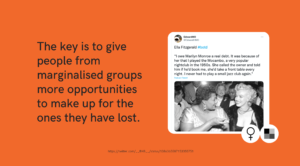I think allyship as a general term is one of the core principles of Diversity, Equity and Inclusion. This is shy I have written this capability maturity model for allyship – or supporting people from marginalised groups.
This is because of the idea that keeps coming up on Twitter and LinkedIn about mentorship versus sponsorship. In my current opinion, you need to go through mentorship at some level to be able to give someone sponsorship. At least that is where my value system is coming from.
While I did search for this on Google and didn’t get a lot of hits, I was lucky enough to meet up with Dawn from The Dream Collective and incorporate that into this post.
Here is a rough draft that I am sure I will improve on later:
1. Initial – realising there is an issue with representation or lack of diversity or something else triggered you
2. Learning – finding more about the issues and genuinely wanting to help
3. Mentorship – providing help to the marginalised without having to support them publicly ie. advice for getting the marginalised to create their own opportunities
4. Allyship – identify problems and providing backing and support for marginalised people publicly
5. Sponsorship – creating opportunities for people from marginalised groups publicly
Initial is your first step. Before that it isn’t even on your radar. When you are first starting out you can realise that people from marginalised groups are not being treated the same. They are being dehumanised. Maybe you hear about it from someone, maybe you saw an instance yourself and felt that was a tipping point for you and suddenly the idea of Diversity, Equity, and Inclusion suddenly made sense to you.
Learning is your second step. This is where you need to understand the problem more. This is where sometimes you can get into trouble. Asking people from marginalised groups might trigger them, they might also be dealing with other issues. So it is important to look around for ways to learn while minimising the emotional energy of the people you want to help. And this is exactly why I wrote this resource! The best way to start is with 15 minute introduction to Diversity and Inclusion in the workplace.
Mentorship is your third step. The way I define this is helping individual people from marginalised groups to learn how to create their own opportunities. Now that is all well and good for those who don’t know how to create their own opportunities, but it is also limiting because even if they did know, they might not be as successful because they are marginalised. Remember, as per the State Library of NSW mentions “it was not until the 1967 Referendum that the Commonwealth was able to create laws for Aboriginal Australians and count Aboriginal people in the national census“.
Allyship is your fourth step. This is like mentorship but you show your support publicly. Many allyship programs focus on this area. For example, The Dream Collective has a new program called “Better TogetHER” that has several actions. This fourth step is the equivalent of their Action 1 – speaking up.

However, as the picture above suggests, we really want to make opportunities for people from marginalised groups to make up for the ones they have lost in the past, and the ones they will lose in the future. This is where the fifth step, sponsorship comes from. It is aligned to Action 2 – Extending Opportunities from The Better TogetHER program.